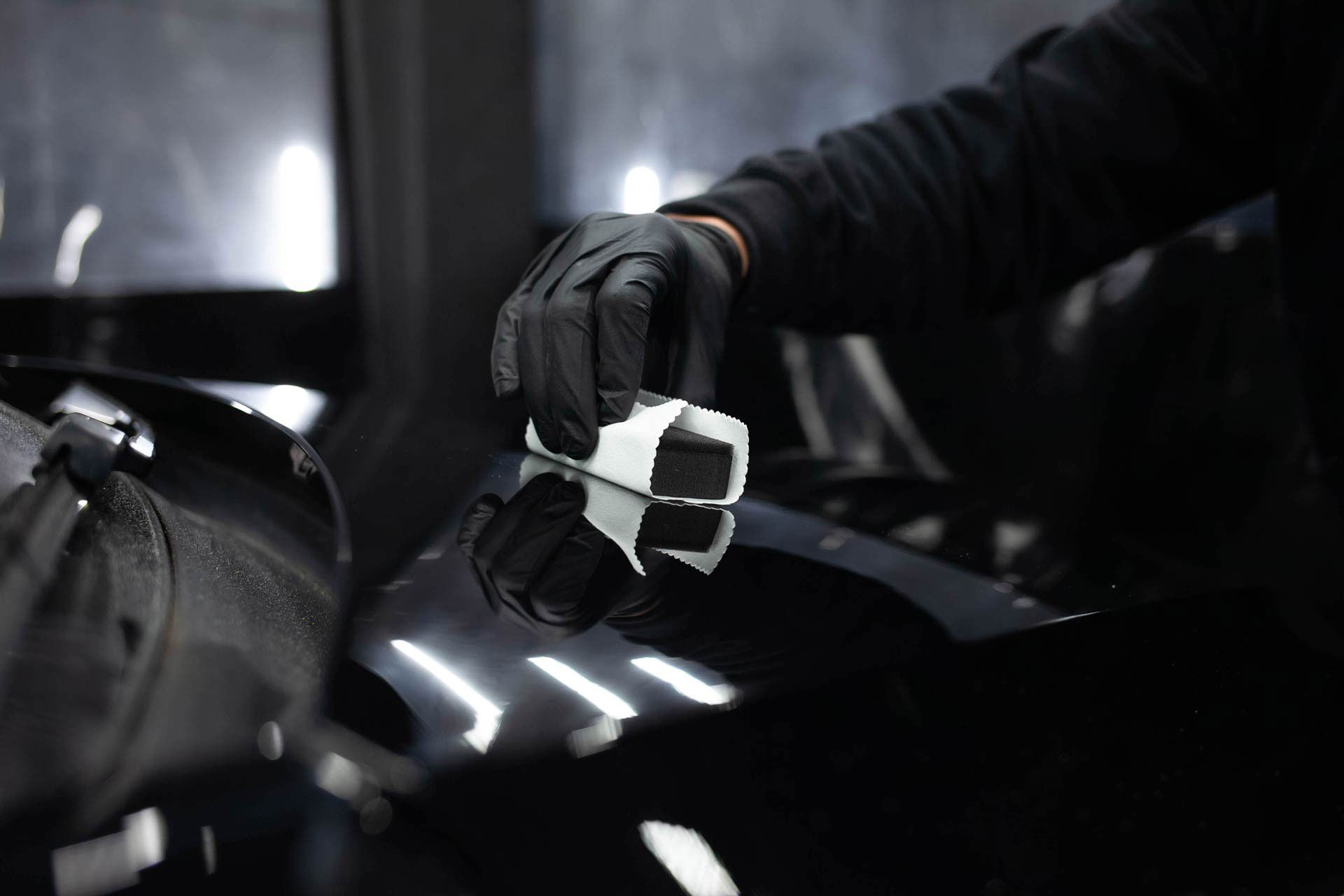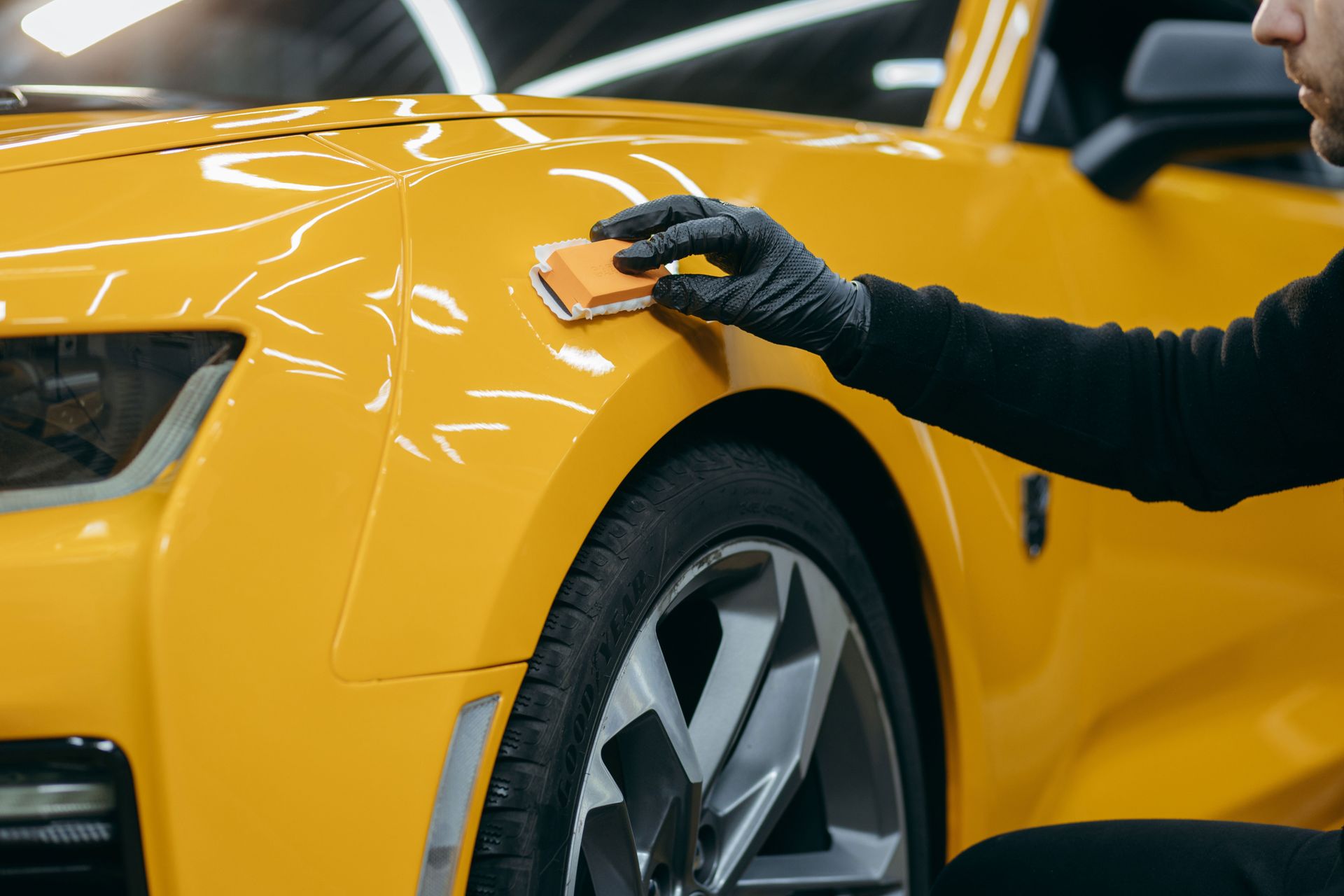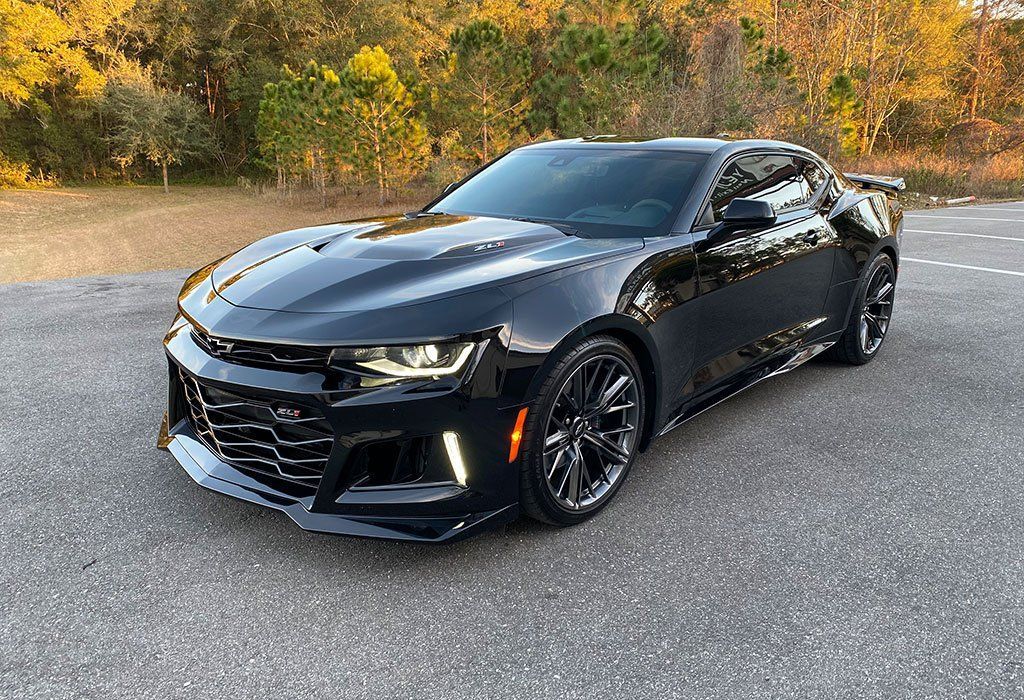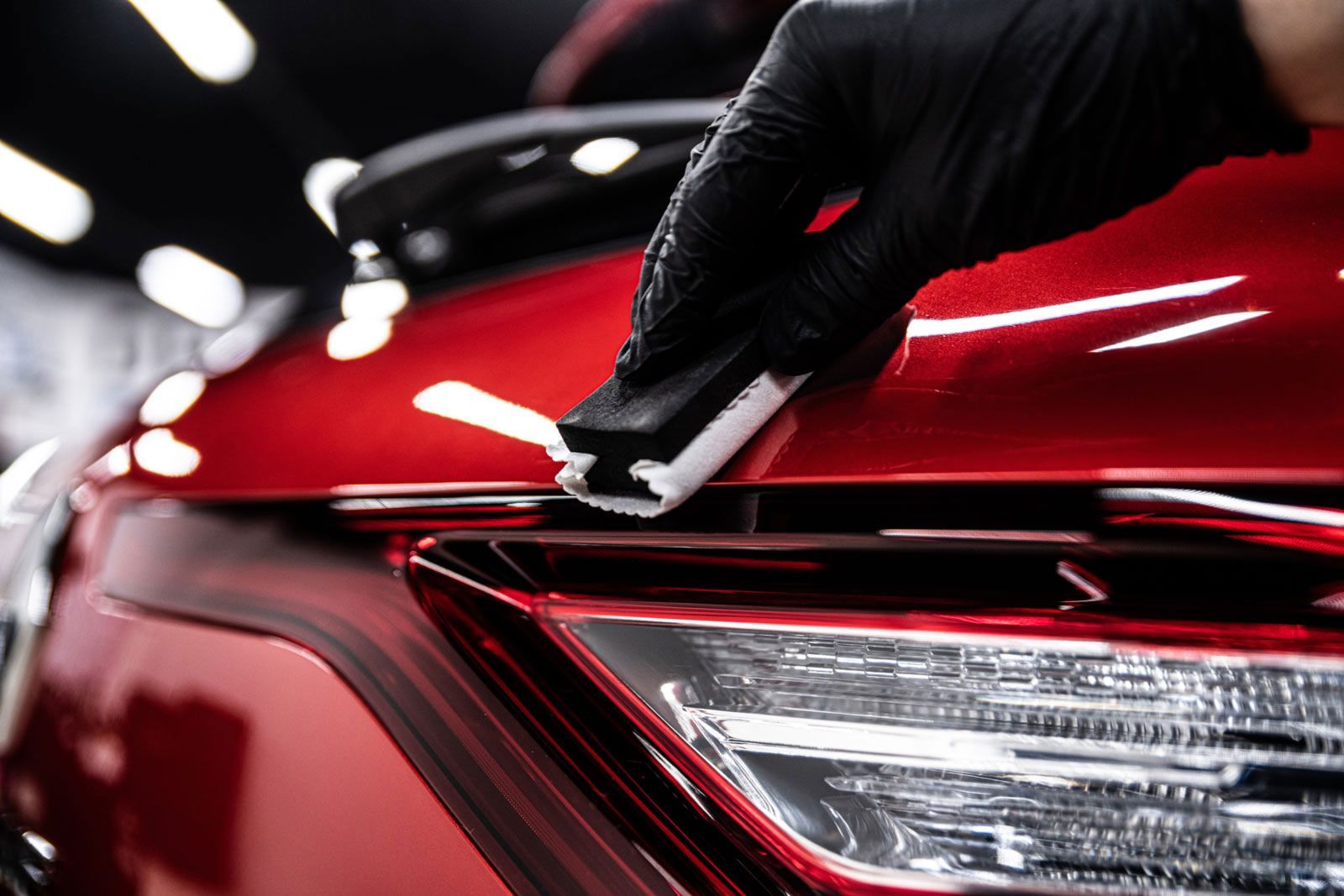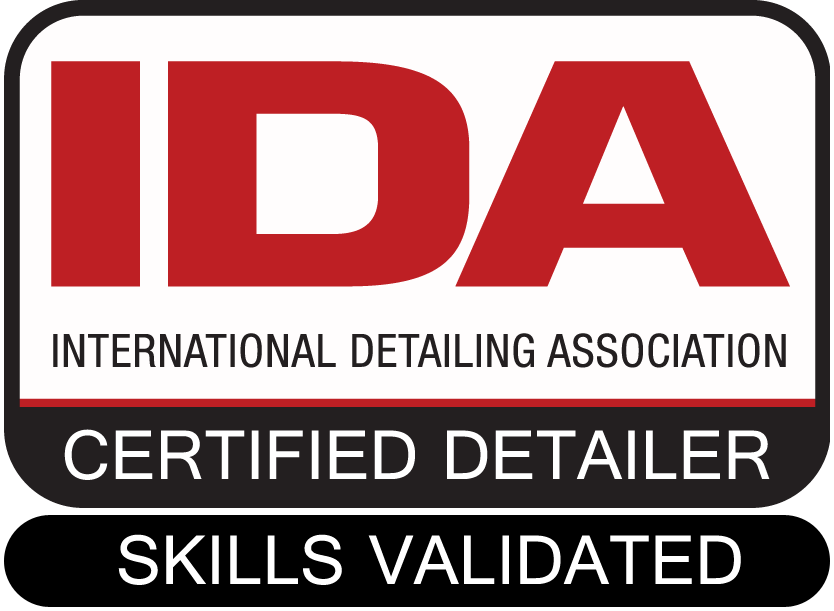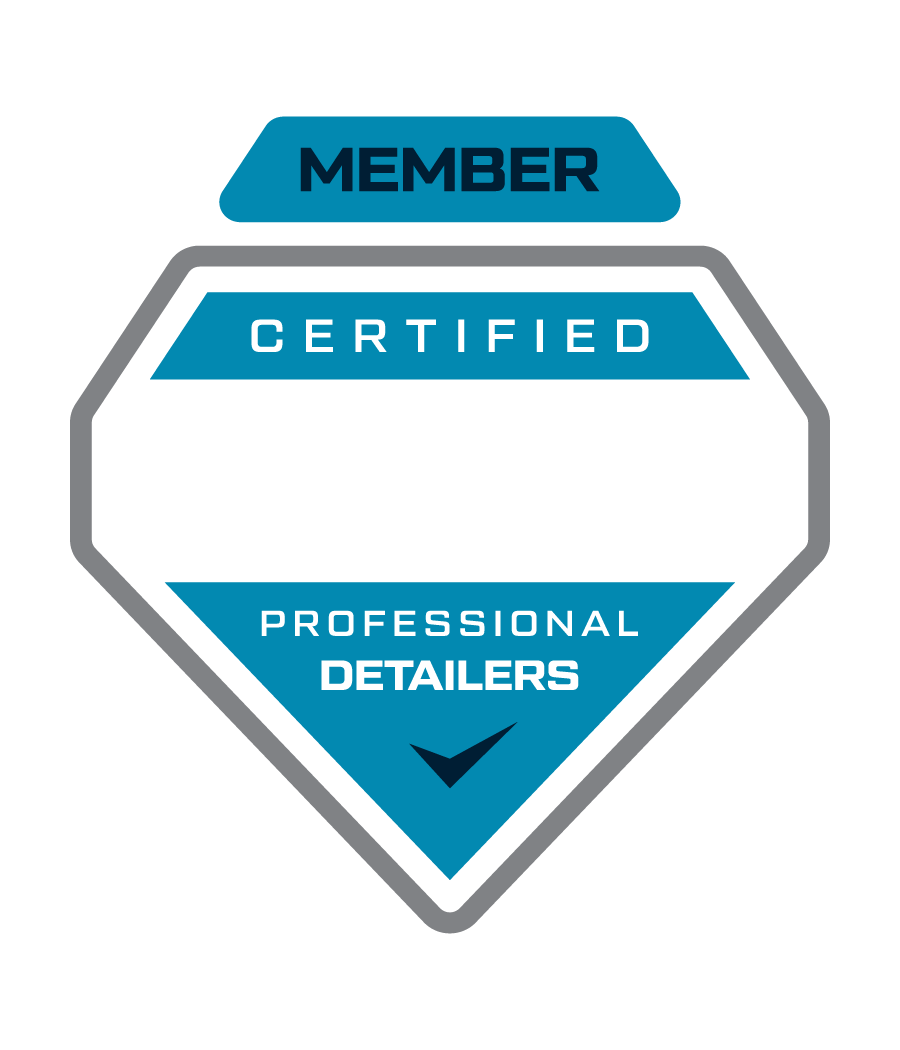When it comes to keeping your car looking sharp, many drivers wonder about the best way to protect their vehicle's paint. Ceramic coatings offer an innovative solution for maintaining that fresh appearance while shielding against the elements. These advanced protective treatments provide long-lasting results that help your vehicle look its best, no matter what conditions it faces.
Ceramic coatings play a crucial role in long-term paint preservation by forming a strong chemical bond with the vehicle's surface, providing enhanced durability against environmental contaminants, UV rays, and wear. These coatings protect against damage such as oxidation and fading while maintaining the vehicle's aesthetic appeal, ultimately enhancing its resale value and reducing the need for frequent maintenance.
What is a Ceramic Coating?
Ceramic coatings are advanced liquid polymers that create a formidable shield for automotive paint. When applied to your vehicle's exterior, these coatings chemically bond with the factory paint through a process involving silicon dioxide (SiO₂). This bonding transforms the surface into a resilient protective layer that stands up brilliantly against harsh environmental conditions. Unlike waxes or sealants, which merely sit on top of the paint, ceramic coatings integrate seamlessly, forming a durable barrier that can withstand the test of time.
- Chemical Composition: Ceramic coatings typically consist primarily of silicon dioxide (SiO₂), which is renowned for its robust protective qualities. In some cases, titanium dioxide (TiO₂) is also blended into the formula, enhancing the product's resilience even further. This meticulous molecular arrangement sets ceramic coatings apart from simpler wax applications, leading to superior durability against environmental contaminants like bird droppings and road grime. This chemical bond means that once a ceramic coating has been applied, it effectively becomes the new surface of your car's paint, offering long-lasting protection rather than just acting as a topical treatment.
- Professional Application: Ceramic coatings have gained immense popularity among car enthusiasts and professional detailers alike. The appeal lies in their ability to form a semi-permanent bond with high-quality automotive paint, ensuring that they don't simply wash away or break down over time like traditional wax applications do. While applying ceramic coatings may sound appealing due to their benefits, achieving optimal performance often requires professional application. For best results, a controlled environment is ideal—clean spaces where dust isn't present and the temperature is appropriate. Professionals equipped with the right tools can meticulously prepare your vehicle by washing, decontaminating, and polishing before applying the coating. This thorough preparation ensures maximum adherence and longevity of the protective layer.
How to Apply Ceramic Coatings
Applying a ceramic coating requires meticulous preparation and attention to detail, but the results are rewarding. The process involves several critical steps to ensure proper adhesion and maximum protection.
- Surface Preparation: Before applying the coating, thoroughly wash your vehicle using a pH-neutral car shampoo, as harsh cleaners can damage the paint. Pay close attention to all areas where dirt tends to accumulate. Once rinsed, use a clay bar for decontamination. This removes embedded contaminants like tree sap or industrial fallout that regular washing might miss, creating a smooth surface that serves as the perfect canvas. After cleaning comes polishing, a vital step because any existing imperfections could become trapped under the ceramic coating, compromising its appearance and effectiveness. Using a dual-action polisher with appropriate polish ensures an even finish. Focus on making the paint as flawless as possible—this not only enhances aesthetics but also promotes better adhesion of the coating.
- Applying the Coating: Apply just a few drops of the coating onto an applicator pad, working in small sections—about 2x2 feet at a time—to ensure thorough coverage. As you spread the coating evenly across the surface, it begins to bond almost immediately. Allow time for proper bonding based on manufacturer instructions, usually around 2-5 minutes. After allowing it to bond, buff out any excess product with a clean microfiber towel to avoid high spots, which are uneven areas that can detract from your finish. High spots can also suggest improper application or excess product buildup—both situations that compromise not just appearance but also durability.
- Curing Process: The final step involves letting your newly applied ceramic coating cure properly to achieve its full hardness. Ideally, your vehicle should be placed in a dust-free environment for at least 24-48 hours. During this curing period, avoid exposing your car to water or harsh weather conditions, as it can disrupt the bonding process. Patience during this phase is essential for maximizing the longevity and efficiency of your ceramic coating.
Key Benefits of Ceramic Coatings
- Enhanced Gloss and Aesthetic Appeal: One of the most remarkable features of ceramic coatings lies in their ability to enhance the gloss and aesthetic appeal of your vehicle. These coatings create a showroom-quality shine that catches the light perfectly. This enhanced gloss not only makes vehicles stand out but also has practical implications. When paint is well-protected and polished, it resists the accumulation of dirt and grime, meaning drivers spend less time cleaning and more time enjoying their ride. The slick surface allows for easier washing—water simply beads off—minimizing effort during cleaning sessions.
- Long-Term Protection: Ceramic coatings act like armor for your car's paint, forming a robust shield against various environmental hazards such as bird droppings, tree sap, and acid rain. These substances risk embedding themselves into untreated paint over time, leading to potential corrosion or staining. With ceramic coatings providing exceptional resistance, contaminants are unable to stick as easily. This functionality stems from their hydrophobic properties, which send water rolling off the surface instead of allowing it to linger and foster dirt formation. A car treated with ceramic coating can achieve a contact angle of over 110 degrees, creating an effective barrier against moisture. With proper care, ceramic coatings can provide ongoing protection for anywhere between 2 to 5 years—significantly outlasting traditional waxes, which may require reapplication every couple of months.
- Chemical Resilience: Beyond protective qualities and aesthetic enhancements, ceramic coatings showcase remarkable chemical resilience. They act as a bulwark against harm from substances like acidic bird droppings or tree sap that would typically etch into unprotected paint surfaces. These coatings can withstand pH levels from 2 to 11, meaning they can endure quite a range of potentially damaging agents found in everyday environments. This level of protection provides peace of mind for vehicle owners who want to ensure their investments remain intact against nature's unpredictable elements.
Hydrophobic Properties of Ceramic Coatings
The hydrophobic nature of ceramic coatings means that water does not cling to the surface; instead, it beads up and gracefully rolls off, taking dirt and grime with it. When rain hits a coated car, droplets scoop up specks of dust and debris as they glide down the surface. This property contributes to an aesthetic advantage while significantly reducing the effort needed for routine cleaning. Vehicles stay cleaner longer simply because daily grime has less chance to take hold. Ceramic coatings also offer enhanced resistance to surface imperfections from everyday encounters with washes, brushes with overhanging branches, and road debris. The protective layer absorbs impact and wear, helping to preserve the vehicle's factory paint. This sacrificial quality means you're adding an additional line of defense that protects what lies beneath, mitigating the minor blemishes that would typically appear on waxed surfaces.
Longevity and Durability
When it comes to paint preservation, durability is key. With proper application and maintenance, ceramic coatings can last anywhere from two to five years, significantly outpacing traditional waxes and sealants that often need reapplication every few months. This extended lifespan not only saves time but also helps maintain the vehicle's aesthetic appeal over the long term. The longevity of ceramic coatings largely depends on the concentration of silicon dioxide (SiO₂) in the formula; higher concentrations directly translate to thicker and more robust protection. Regular maintenance plays a crucial role in ensuring your ceramic coating remains effective throughout its life. A simple wash with a pH-neutral soap and avoiding abrasive materials can go a long way in preserving the coating's integrity.
Weather Resistance
Ceramic coatings offer formidable resistance to the elements. Weather conditions can be harsh on automotive paint, with factors such as sun exposure, acid rain, and harsh winters taking their toll. Ceramic coatings act as a shield against UV rays, preventing oxidation that leads to fading over time. This means your vehicle retains its vibrant color much longer compared to surfaces treated with traditional methods. While traditional wax might provide a temporary glow, it won't protect against long-term damage caused by sun exposure or chemical stains. The fortified barrier created by ceramic coatings makes them incredibly resilient against environmental contaminants. The slick surface repels water effectively, reducing water spots that can mar your vehicle's appearance.
Comparison with Other Paint Protectants
When it comes to protecting your car's paint, understanding the differences between available options helps you make an informed decision. Traditional waxes have long been popular due to their ability to provide a glossy finish. However, wax typically lasts around 2 to 3 months before it begins to degrade under environmental stressors like UV rays and rain. Ceramic coatings, on the other hand, bond to your vehicle's paintwork at a molecular level, creating a thick protective layer that can last from 2 to 5 years when applied correctly. This enduring nature means consistent appearance over time without constant reapplication.
Sealants offer stronger protection than waxes, lasting up to one year. However, they still cannot compete with the longevity of ceramic coatings. Sealants act as a temporary barrier against contaminants and UV rays but lack the advanced chemical structure that makes ceramic coatings superior in material resilience and surface reactions. Ceramic coatings outshine both waxes and sealants in terms of durability, UV protection, and hydrophobic properties, resulting in less frequent maintenance visits and more time enjoying your vehicle.
Maintaining Ceramic-Coated Vehicles
After having the ceramic coating applied, establishing a routine maintenance plan keeps it performing at its best. Regular washing with a pH-neutral soap is strongly recommended, as harsh chemicals can strip away the protection. Avoid abrasive car washes, which can leave your vehicle vulnerable. Consider using two buckets—one filled with soapy water and another with clean water for rinsing. This method keeps dirt contained and reduces the risk of damaging your vehicle's surface during cleaning.
Maintenance sprays specifically designed for ceramic coatings can significantly extend the life of your coating. These specially formulated products enhance and maintain the hydrophobic properties that make ceramic coatings appealing. Applying these sprays monthly boosts water beading and adds an extra layer of protection against environmental contaminants. Regular inspections also play a pivotal role in care. Every few weeks, walk around your vehicle, checking for signs that the ceramic coating might be wearing thin. Areas where water doesn't bead as effectively often signal that it's time to take preventive action. By addressing these sections promptly through touch-ups or reapplications, you can prolong the overall life of your ceramic coating.
Ceramic coatings represent a significant advancement in automotive paint protection technology. By forming a molecular bond with your vehicle's paint, they provide superior protection against environmental hazards, UV damage, and chemical contaminants while maintaining an impressive aesthetic appeal. With proper application and maintenance, ceramic coatings offer years of reliable protection, reducing maintenance needs and helping preserve your vehicle's value. Whether you're a car enthusiast or simply want to protect your investment, ceramic coatings provide a comprehensive solution for long-term paint preservation.
Best Ceramic Coating Services in The Villages, FL
Give your vehicle the protection and brilliance it deserves with Reflection Pro Services, offering
expert ceramic coating in The Villages, FL. Our team uses advanced techniques to apply a durable shield that enhances your car’s shine while guarding against the harsh Florida sun, road grime, and everyday wear. Experience a finish that’s sleek, resilient, and easier to maintain—schedule your ceramic coating service today and enjoy long-term confidence in your car’s appearance!
Reflection Pro Services and Owners Pride endorsed by CARFAX
Reflection Pro Services and Owners Pride companies are now that is endorsed by CarFax. When ever we perform any of our ceramic coating services, it is registered with CarFax. You will now have a positive report on your CarFax history. This is just another benefit of having Reflection Pro Services Provide your services.

Book an Appointment
If you have any questions or would like to just learn more about coatings, please feel free to give me a call, email, or fill out my book an appointment and we can discuss your questions and concerns.

